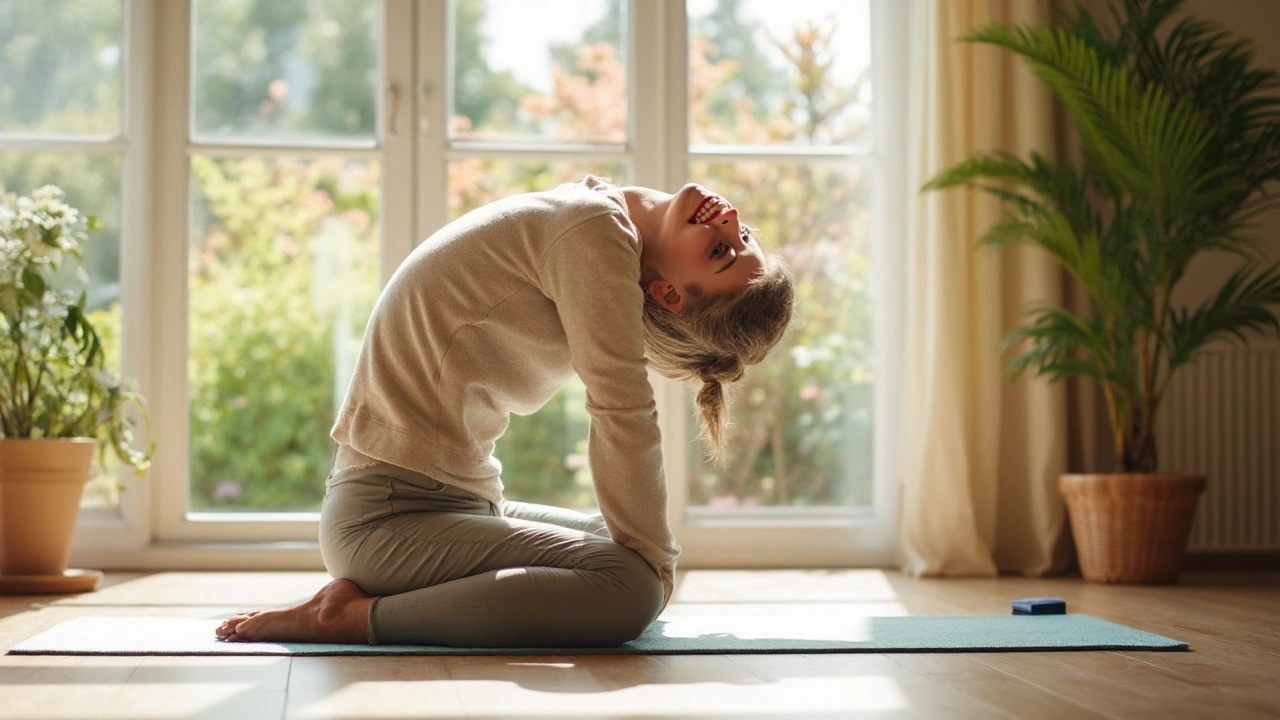Flexibility Training for Arthritis: Easy Moves to Feel Better
If you have arthritis, stiff joints can make everyday tasks feel like a chore. The good news? Simple stretching can loosen those joints, cut pain, and keep you active. You don’t need fancy equipment or hours of gym time—just a few minutes a day.
Why Flexibility Matters in Arthritis
Arthritis inflames joint tissues, which leads to swelling and loss of motion. When you move a joint through its full range, you pump fresh blood into the area. That blood brings nutrients and helps clear out waste that fuels inflammation. Over time, regular gentle stretching can keep cartilage healthier and reduce the feeling of “locked” joints.
Another plus is that flexibility work activates the muscles around the joint. Strong, flexible muscles act like shock absorbers, taking pressure off the arthritic spot. That support translates to less pain when you climb stairs, open a jar, or simply stand up from a chair.
Easy Flexibility Routines to Try
1. Wrist Waves – Sit with your forearm on a table, palm down. Slowly lift each finger, hold for two seconds, then lower. Do 10 reps on each hand. This loosens the small joints that often get sore with rheumatoid arthritis.
2. Shoulder Rolls – Stand tall, let your arms hang. Roll shoulders forward in a circular motion 10 times, then backward 10 times. This simple motion eases stiffness in the shoulder girdle and improves posture.
3. Seated Knee Stretch – Sit on a sturdy chair, slide one foot back until you feel a stretch in the front of the thigh. Hold for 15‑20 seconds, then switch legs. It opens up the knee joint without putting weight on it.
4. Ankle Circles – While seated, lift one foot off the floor and draw big circles with your toes. Do 10 circles clockwise, then 10 counter‑clockwise. Switch ankles. This increases ankle range and can help with balance.
5. Cat‑Cow Stretch – Get on hands and knees. Arch your back up (cat) then dip it down while looking forward (cow). Move slowly, 8‑10 cycles. This mobilizes the spine and relieves low‑back tension common in arthritis patients.
Do each exercise once a day, or twice if you feel up to it. Keep movements smooth—no bouncing or jerking. If any stretch hurts more than a mild pull, stop and try a smaller range.
Beyond the moves, remember a few extra habits that make flexibility training stick:
- Warm up lightly – A brief walk or warm shower gets blood flowing before you stretch.
- Stay hydrated – Liquid helps keep joint fluid lubricated.
- Breathe normally – Deep breaths relax muscles and let you stretch farther.
- Consistency beats intensity – Ten minutes every day beats an hour once a week.
Flexibility training isn’t a cure, but it’s a powerful tool that can lower pain, boost independence, and keep you moving longer. Start with one or two of the exercises above, add more as you get comfortable, and watch your joints thank you.
Ready to give it a try? Grab a chair, set a timer for five minutes, and follow the routine. Your body will feel the difference, and the habit will become a natural part of your day.

- Jul, 24 2025
- Comments 9